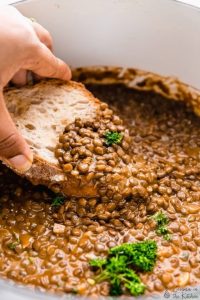Ready to turn up the heat in your kitchen? Sri Lankan cuisine is a vibrant tapestry of flavors, where spices play the starring role. From fiery curries to tangy sambols, these 18 recipes will transport your taste buds straight to the heart of Sri Lanka. Perfect for adventurous home cooks looking to spice up their meal routine, each dish promises a delicious escape. Let’s dive into the spice!
Chicken Curry with Coconut Milk
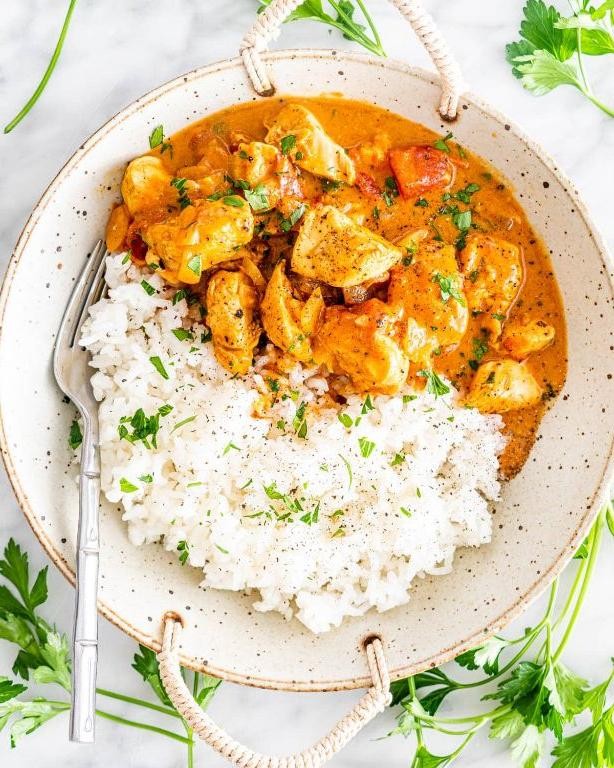
Sometimes, all I crave is a dish that wraps me in warmth and comfort, and that’s exactly what this Chicken Curry with Coconut Milk does. It’s my go-to recipe when I need something hearty yet easy to whip up, especially on those busy weeknights.
Ingredients
- Chicken thighs – 1.5 lbs
- Coconut milk – 1 can (13.5 oz)
- Curry powder – 2 tbsp
- Onion – 1, diced
- Garlic – 3 cloves, minced
- Vegetable oil – 2 tbsp
- Salt – 1 tsp
Instructions
- Heat vegetable oil in a large skillet over medium heat until shimmering, about 2 minutes.
- Add diced onion and minced garlic to the skillet, sautéing until the onion is translucent, about 5 minutes. Tip: Stir frequently to prevent burning.
- Add chicken thighs to the skillet, browning each side for about 4 minutes. Tip: Don’t overcrowd the pan to ensure even browning.
- Sprinkle curry powder and salt over the chicken, stirring to coat evenly.
- Pour in coconut milk, stirring to combine all ingredients. Bring to a simmer.
- Reduce heat to low, cover, and let simmer for 20 minutes. Tip: Check occasionally to stir and ensure the sauce isn’t sticking to the bottom.
- Remove from heat and let sit covered for 5 minutes before serving.
Perfectly tender chicken thighs swimming in a creamy, aromatic coconut curry sauce make this dish a standout. Serve it over a bed of steamed jasmine rice or with warm naan bread to soak up every last bit of that delicious sauce.
Egg Hoppers
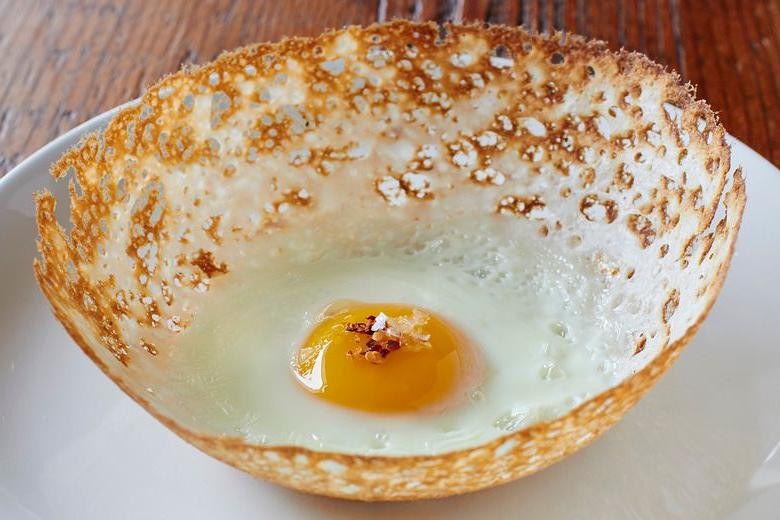
Yesterday, I stumbled upon a culinary gem that’s been a staple in Sri Lankan households for centuries—Egg Hoppers. These bowl-shaped pancakes, with a perfectly cooked egg nestled in the center, are not just a meal; they’re an experience. I remember my first bite; the crispy edges contrasting with the soft, eggy center was a revelation.
Ingredients
- Rice flour – 1 cup
- Coconut milk – 1 cup
- Active dry yeast – ½ tsp
- Sugar – 1 tsp
- Salt – ½ tsp
- Eggs – 4
Instructions
- In a large bowl, mix rice flour, coconut milk, yeast, sugar, and salt until smooth. Cover and let it ferment for 1 hour at room temperature.
- Heat a small non-stick pan over medium heat (350°F) and lightly grease it with oil.
- Pour ¼ cup of the batter into the pan, swirling it to coat the sides and form a bowl shape.
- Crack an egg into the center of the batter. Cover and cook for 5 minutes, or until the egg whites are set but the yolk is still runny.
- Carefully remove the hopper from the pan and repeat with the remaining batter and eggs.
Only when you bite into an Egg Hopper do you truly understand its magic. The crispy, lacy edges give way to a soft, savory center, making it perfect for dipping into spicy sambal or drizzling with honey for a sweet contrast.
Parippu (Dhal Curry)
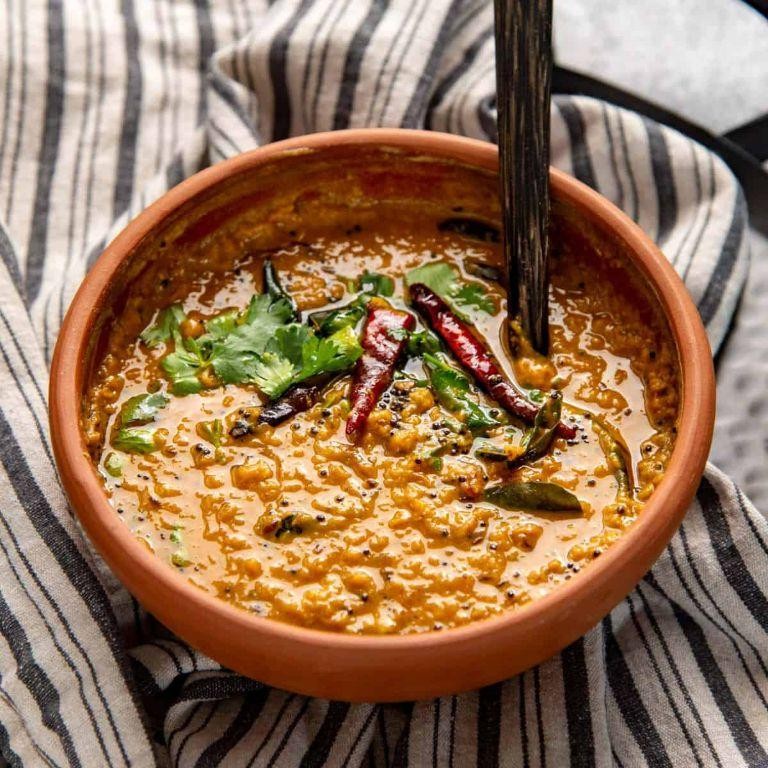
My journey with Parippu (Dhal Curry) began on a chilly evening when I was craving something warm, comforting, and packed with flavor. This dish, a staple in many South Asian households, has since become a weekly ritual in my kitchen, offering both simplicity and depth in every bite.
Ingredients
- Red lentils – 1 cup
- Water – 3 cups
- Turmeric powder – ½ tsp
- Coconut milk – ½ cup
- Salt – 1 tsp
Instructions
- Rinse the red lentils under cold water until the water runs clear, ensuring they’re free from any debris.
- In a medium pot, combine the rinsed lentils, water, and turmeric powder. Bring to a boil over high heat.
- Once boiling, reduce the heat to low, cover, and simmer for 20 minutes, stirring occasionally to prevent sticking. Tip: The lentils should be soft and mushy when done.
- Stir in the coconut milk and salt, cooking for an additional 5 minutes on low heat to blend the flavors. Tip: For a creamier texture, you can blend half the curry before adding the coconut milk.
- Remove from heat and let it sit covered for 5 minutes to thicken. Tip: The curry will continue to thicken as it cools, so adjust the consistency with a little hot water if needed before serving.
Zesty and comforting, this Parippu (Dhal Curry) boasts a creamy texture with a hint of earthiness from the turmeric. Serve it over steamed rice or with a side of flatbread for a hearty meal that warms the soul.
Kottu Roti
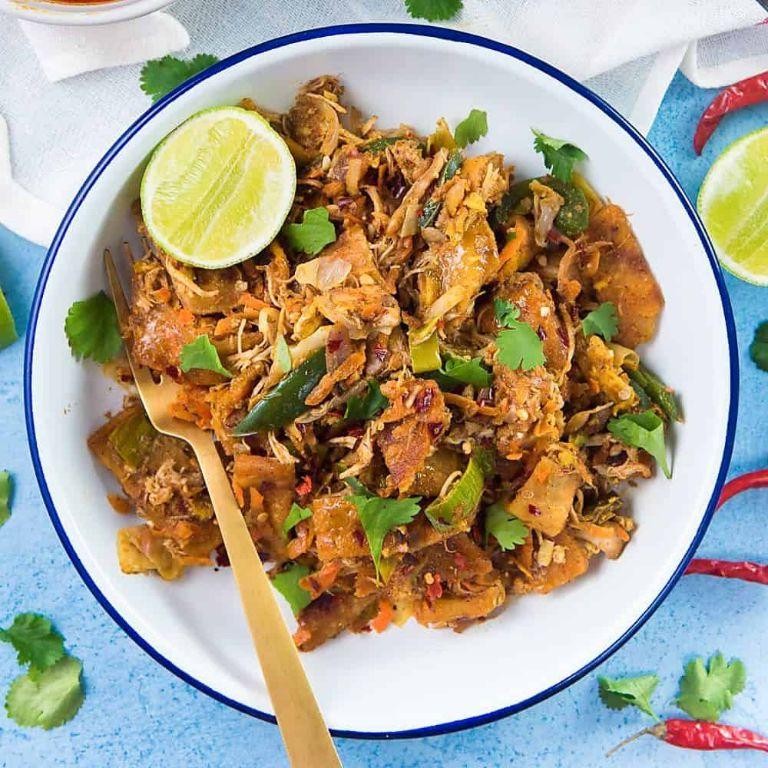
Having stumbled upon Kottu Roti during a late-night food adventure in New York, I was instantly hooked by its comforting chaos of flavors and textures. It’s a dish that feels like a hug from a friend you haven’t seen in years—unexpected but deeply familiar.
Ingredients
- Roti – 4 cups, shredded
- Vegetable oil – 2 tbsp
- Onion – 1, thinly sliced
- Garlic – 2 cloves, minced
- Carrots – 1 cup, julienned
- Eggs – 2
- Soy sauce – 1 tbsp
- Chili powder – 1 tsp
- Salt – ½ tsp
Instructions
- Heat vegetable oil in a large skillet over medium-high heat until shimmering, about 1 minute.
- Add thinly sliced onion and minced garlic to the skillet. Sauté until the onions are translucent, about 3 minutes.
- Toss in julienned carrots, stirring occasionally until they begin to soften, roughly 2 minutes.
- Push the vegetables to one side of the skillet. Crack the eggs into the empty space, scrambling them until just set, about 1 minute.
- Mix the scrambled eggs with the vegetables, then add the shredded roti to the skillet.
- Drizzle soy sauce over the roti, sprinkle with chili powder and salt. Stir everything together, ensuring the roti is evenly coated and heated through, about 3 minutes.
- Tip: For an extra crunch, let the roti sit undisturbed for a minute before stirring—this creates delightful crispy bits.
- Tip: If you’re feeling adventurous, a squeeze of lime juice before serving adds a bright contrast to the rich flavors.
- Tip: Always use day-old roti for the best texture; fresh roti can become mushy when stir-fried.
Perfectly balanced between spicy, savory, and slightly sweet, this Kottu Roti is a testament to the beauty of simple ingredients coming together. Serve it straight from the skillet for that authentic street-food vibe, or top with a fried egg for an extra layer of indulgence.
Lamprais
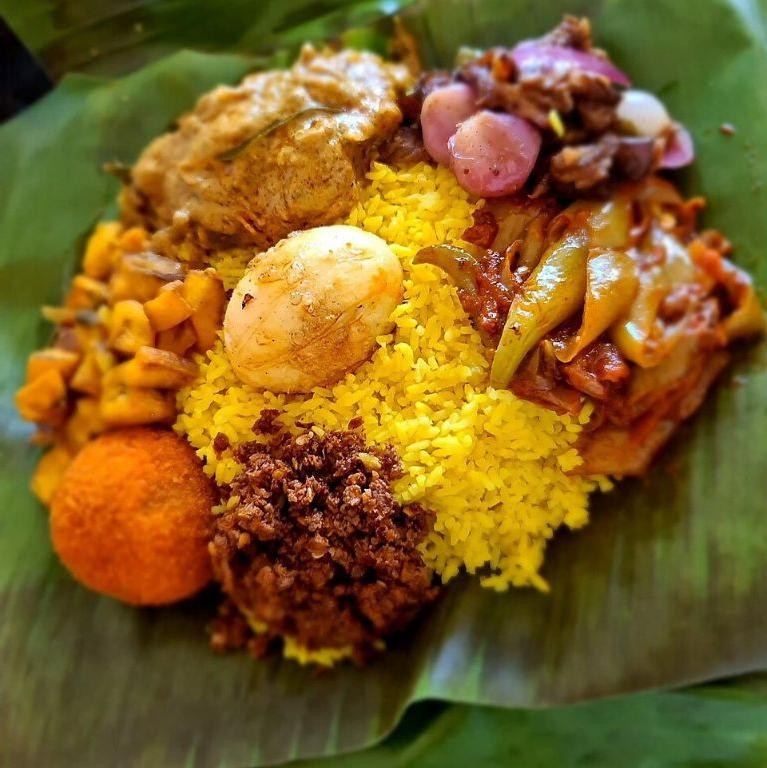
Unwrapping the flavors of Lamprais takes me back to my first encounter with this Sri Lankan delicacy, a harmonious blend of spices and textures wrapped in a banana leaf. It’s a dish that demands patience but rewards you with an unforgettable taste adventure.
Ingredients
- Basmati rice – 2 cups
- Chicken thighs – 1 lb
- Curry powder – 2 tbsp
- Coconut milk – 1 cup
- Banana leaves – 2 large pieces
Instructions
- Rinse the basmati rice under cold water until the water runs clear, then soak it for 30 minutes. Tip: Soaking rice reduces cooking time and makes it fluffier.
- Marinate the chicken thighs with curry powder and a pinch of salt for at least 1 hour. Tip: Longer marination means deeper flavors.
- Preheat your oven to 350°F (175°C).
- Drain the rice and cook it with coconut milk and 2 cups of water in a pot over medium heat for 15 minutes. Tip: Keep the lid on to trap the steam and cook the rice evenly.
- While the rice cooks, heat a pan over medium-high heat and sear the marinated chicken thighs for 3 minutes on each side.
- Cut the banana leaves into large squares and briefly pass them over an open flame to make them pliable.
- Layer the partially cooked rice and seared chicken on the banana leaves, then fold the leaves to enclose the contents tightly.
- Place the wrapped parcels on a baking tray and bake in the preheated oven for 20 minutes.
Opening the banana leaf reveals a fragrant, steaming parcel where the rice has absorbed all the spicy, coconutty goodness of the chicken. Serve it directly in the leaf for an authentic touch that’ll transport your senses straight to Sri Lanka.
Fish Ambul Thiyal (Sour Fish Curry)
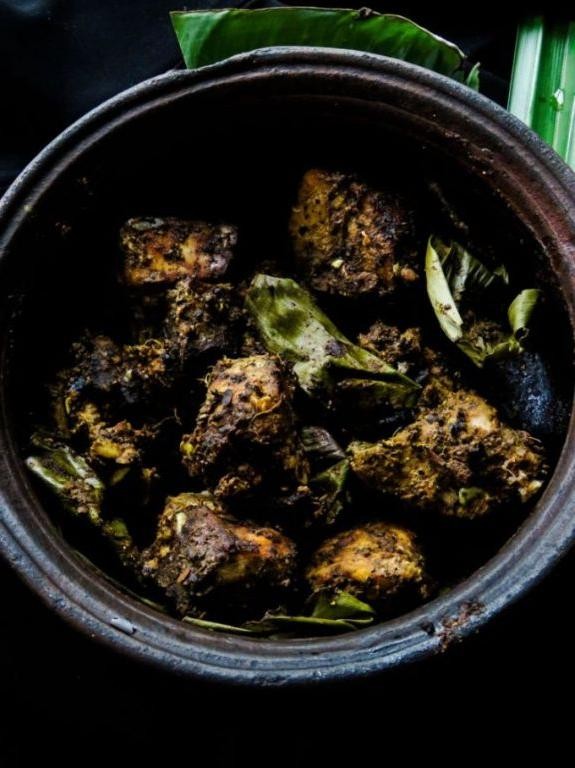
How many times have I found myself craving something tangy, spicy, and utterly comforting? Fish Ambul Thiyal, a Sri Lankan sour fish curry, is my go-to dish for those moments. It’s a recipe that’s close to my heart, reminding me of the time I first tried it at a friend’s house and couldn’t stop thinking about it for weeks.
Ingredients
- Fish – 1 lb
- Goraka (dried mangosteen) – 3 pieces
- Red chili flakes – 1 tbsp
- Turmeric – 1 tsp
- Salt – 1 tsp
- Curry leaves – 10
- Pandan leaf – 1
- Coconut oil – 2 tbsp
Instructions
- Clean and cut the fish into 2-inch pieces, ensuring all bones are removed.
- Soak the goraka in 1/2 cup of warm water for 10 minutes to soften.
- In a bowl, mix the fish with turmeric, red chili flakes, and salt. Let it marinate for 15 minutes.
- Heat coconut oil in a pan over medium heat. Add curry leaves and pandan leaf, sautéing for 30 seconds until fragrant.
- Add the marinated fish to the pan, searing each side for 2 minutes until lightly browned.
- Pour the soaked goraka along with its water into the pan. Reduce heat to low, cover, and simmer for 15 minutes.
- After 15 minutes, remove the lid and cook for another 5 minutes to thicken the sauce.
- Tip: For an extra tangy flavor, squeeze a bit of lime juice before serving.
- Tip: Ensure the fish is fully submerged in the sauce while simmering to cook evenly.
- Tip: Serve with steamed rice to balance the sourness and spice.
Just like that, you’ve got a dish that’s bursting with flavors – the tanginess of goraka, the heat from chili, and the earthy notes of curry leaves. The fish turns out tender, perfectly absorbing all the spices. For a twist, try serving it with a side of coconut sambol to add a sweet contrast.
Wambatu Moju (Eggplant Pickle)
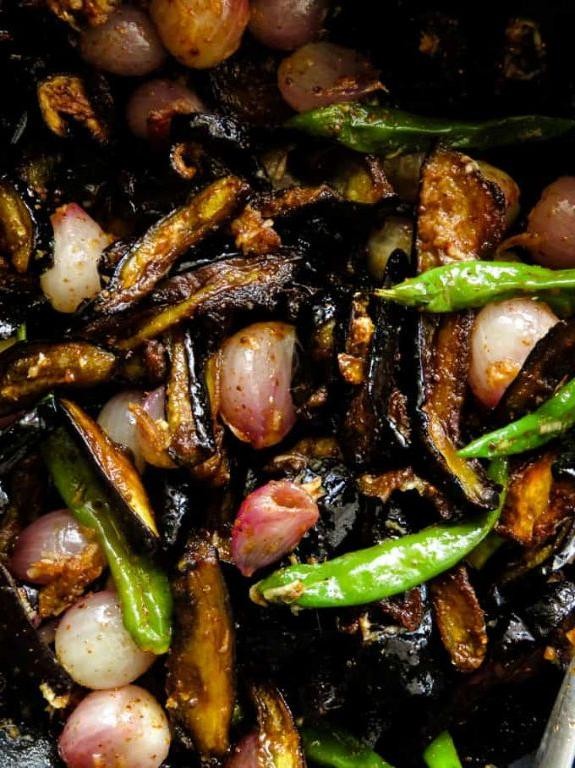
Believe it or not, the first time I tried Wambatu Moju, it was at a tiny Sri Lankan restaurant tucked away in the heart of New York City. The tangy, sweet, and slightly spicy flavors of this eggplant pickle had me hooked from the first bite, and I knew I had to learn how to make it at home. Now, it’s a staple in my kitchen, especially when I’m craving something with a bit of a kick.
Ingredients
- Eggplant – 1 large
- Vinegar – 1 cup
- Sugar – ½ cup
- Mustard seeds – 1 tsp
- Turmeric powder – ½ tsp
- Red chili flakes – 1 tsp
- Salt – 1 tsp
Instructions
- Cut the eggplant into 1-inch cubes and soak in salted water for 10 minutes to remove bitterness. Drain well.
- Heat vinegar in a pan over medium heat until it starts to simmer, about 3 minutes.
- Add sugar to the vinegar, stirring continuously until completely dissolved, about 2 minutes.
- Add the drained eggplant cubes to the pan, along with mustard seeds, turmeric powder, red chili flakes, and salt. Stir to combine.
- Reduce heat to low and simmer for 20 minutes, stirring occasionally, until the eggplant is tender and the sauce has thickened.
- Remove from heat and let cool to room temperature before transferring to a jar. Tip: The flavors develop more if you let it sit overnight.
- Store in the refrigerator for up to 2 weeks. Tip: Always use a clean spoon to serve to prevent contamination.
Zesty and vibrant, this Wambatu Moju brings a delightful contrast of flavors to any meal. Try it alongside some steamed rice or as a bold addition to your next cheese platter for an unexpected twist.
Pol Sambol (Coconut Sambol)
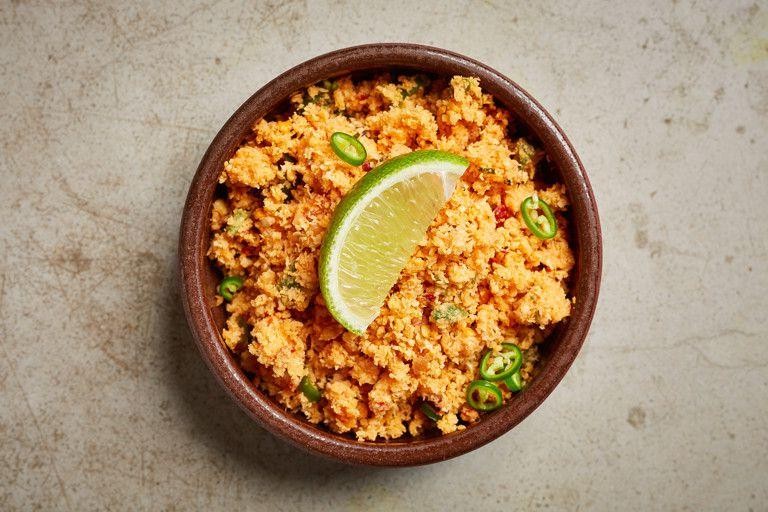
Kicking off our recipe roundup with a bang, let’s dive into the vibrant flavors of Pol Sambol, a Sri Lankan coconut relish that’s as versatile as it is delicious. I first stumbled upon this dish during a friend’s potluck, and its bold, spicy-sweet profile had me hooked from the first bite. Perfect for spooning over rice, pairing with flatbreads, or even as a bold sandwich spread, it’s a staple in my kitchen for good reason.
Ingredients
- Desiccated coconut – 1 cup
- Red chili flakes – 1 tbsp
- Lime juice – 2 tbsp
- Salt – ½ tsp
Instructions
- In a medium bowl, combine the desiccated coconut and red chili flakes. Tip: For a fresher taste, you can use freshly grated coconut instead of desiccated.
- Add the lime juice and salt to the bowl. Mix thoroughly until all ingredients are well combined. Tip: Adjust the lime juice according to your preference for tanginess.
- Let the mixture sit for 10 minutes to allow the flavors to meld together. Tip: For an extra kick, add a finely chopped small onion or a clove of minced garlic.
Now that your Pol Sambol is ready, notice how the texture is delightfully crumbly yet moist, with a fiery kick from the chili flakes balanced by the creamy coconut. Try serving it alongside grilled fish or chicken for a meal that sings with flavor.
Gotu Kola Sambol
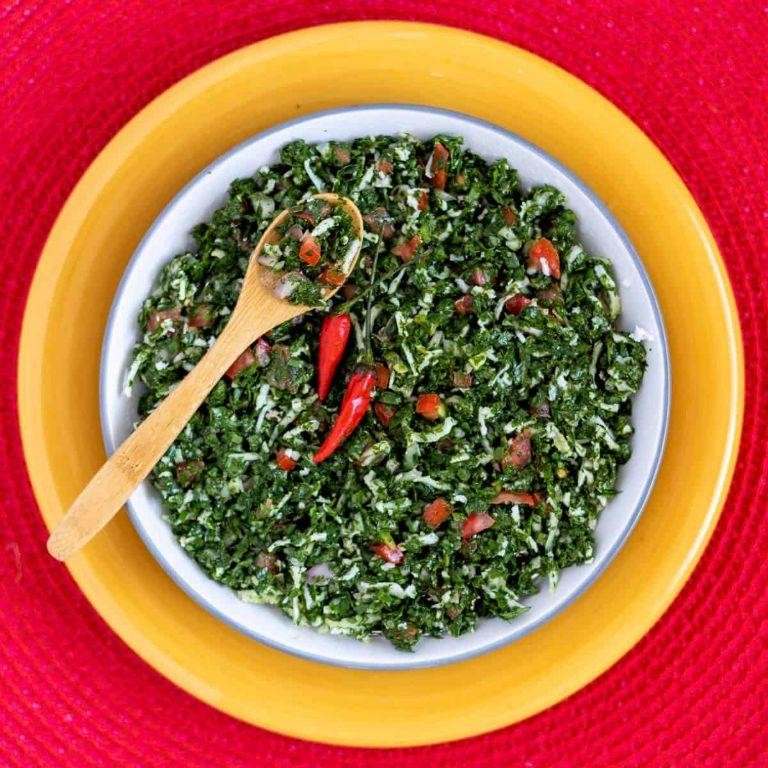
Every now and then, I stumble upon a dish that not only surprises me with its flavors but also brings a piece of cultural heritage to my table. That’s exactly what happened with Gotu Kola Sambol, a vibrant Sri Lankan condiment that’s as nutritious as it is delicious. I remember the first time I tried it; the fresh, peppery taste of gotu kola leaves mixed with the tang of lime and the heat of chili was a revelation.
Ingredients
- Gotu kola leaves – 2 cups, finely chopped
- Fresh grated coconut – 1 cup
- Red onion – 1 small, finely diced
- Green chili – 1, finely sliced
- Lime juice – 2 tbsp
- Salt – ½ tsp
Instructions
- Wash the gotu kola leaves thoroughly under cold running water to remove any dirt, then pat them dry with a clean kitchen towel.
- Finely chop the gotu kola leaves and place them in a large mixing bowl.
- Add the fresh grated coconut, finely diced red onion, and sliced green chili to the bowl with the gotu kola leaves.
- Squeeze the lime juice over the mixture and sprinkle the salt evenly across the top.
- Using your hands, gently mix all the ingredients together until well combined. Tip: The warmth of your hands helps to slightly wilt the gotu kola leaves, making them easier to eat.
- Let the sambol sit for about 10 minutes before serving to allow the flavors to meld together. Tip: This resting time is crucial for the flavors to develop fully.
- Taste and adjust the seasoning if necessary, adding more lime juice or salt according to your preference. Tip: Always taste before serving to ensure the balance of flavors is just right.
Crunchy, fresh, and bursting with flavor, this Gotu Kola Sambol is a testament to the beauty of simple ingredients coming together. Serve it alongside a bowl of steamed rice or as a refreshing side to grilled fish for a meal that’s anything but ordinary.
Kiribath (Milk Rice)
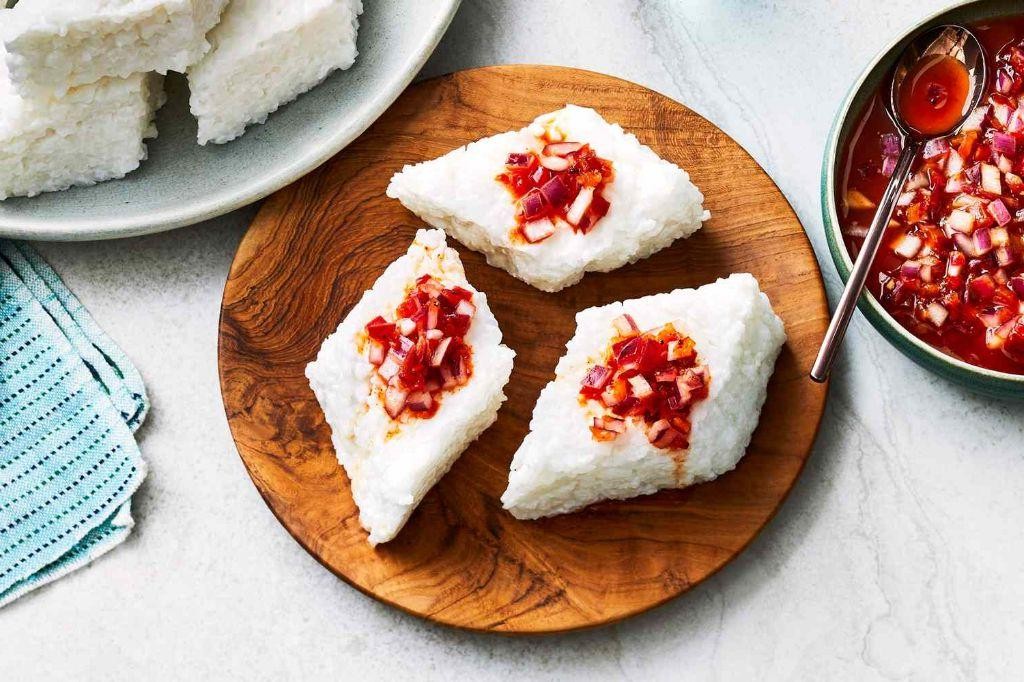
First introduced to me by a Sri Lankan friend during a cozy breakfast gathering, Kiribath, or Milk Rice, quickly became a staple in my home for its comforting simplicity and creamy texture. It’s a dish that speaks volumes with just a few ingredients, proving that sometimes, less really is more.
Ingredients
- White rice – 1 cup
- Water – 2 cups
- Coconut milk – 1 cup
- Salt – ½ tsp
Instructions
- Rinse the white rice under cold water until the water runs clear, to remove excess starch.
- In a medium saucepan, combine the rinsed rice and water. Bring to a boil over high heat.
- Once boiling, reduce the heat to low, cover, and simmer for 15 minutes, or until the water is fully absorbed. Tip: Avoid stirring the rice while it’s cooking to prevent it from becoming mushy.
- Add the coconut milk and salt to the cooked rice, stirring gently to combine. Tip: For a richer flavor, you can use full-fat coconut milk.
- Continue to cook on low heat, uncovered, for another 5 minutes, stirring occasionally, until the mixture thickens. Tip: The Kiribath is ready when it reaches a porridge-like consistency that holds its shape when scooped.
- Remove from heat and let it sit for 2 minutes before serving.
The final dish should be luxuriously creamy with a subtle sweetness from the coconut milk, making it perfect for pairing with spicy curries or sweet accompaniments like bananas or jaggery. I love serving it in small molds for a more elegant presentation at brunch gatherings.
String Hoppers
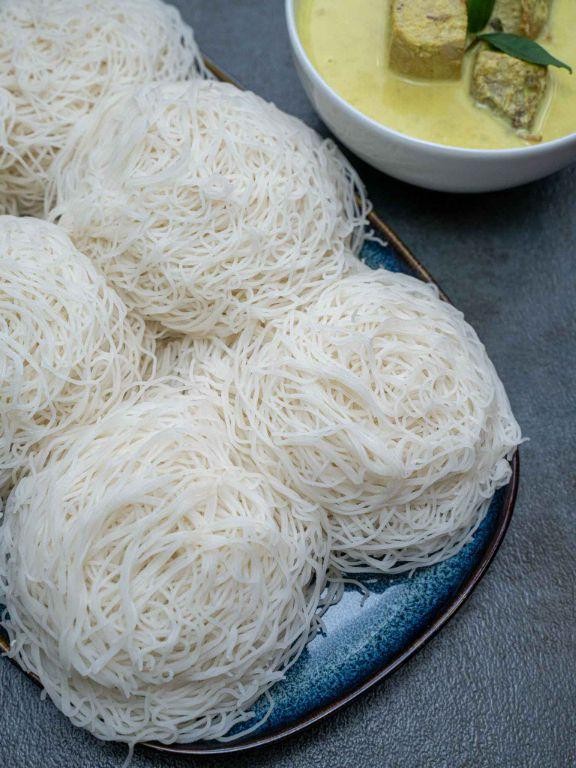
Did you ever wake up craving something light yet satisfying, something that whispers of distant lands but feels right at home in your kitchen? That’s how I felt the first time I stumbled upon String Hoppers, a delicate, steamed rice noodle dish that’s a staple in Sri Lankan cuisine. It’s surprisingly simple to make, and today, I’m sharing my go-to method that never fails to impress.
Ingredients
- Rice flour – 2 cups
- Salt – 1 tsp
- Water – 1 cup
Instructions
- In a large bowl, mix rice flour and salt until well combined.
- Gradually add water to the flour mixture, kneading until a smooth dough forms. Tip: The dough should be soft but not sticky; adjust water or flour as needed.
- Divide the dough into small portions and press each through a string hopper mold onto idli plates or a steamer tray. Tip: If you don’t have a mold, a garlic press can work in a pinch for smaller batches.
- Steam the pressed noodles in a steamer over boiling water for 5-7 minutes, or until they become translucent. Tip: Avoid overcrowding the steamer to ensure even cooking.
- Remove from the steamer and let them cool slightly before serving.
Gorgeously light and slightly chewy, these String Hoppers are a blank canvas for your culinary creativity. Serve them with a spicy curry or even a simple coconut sambol for a meal that’s as versatile as it is delicious.
Jaffna Crab Curry
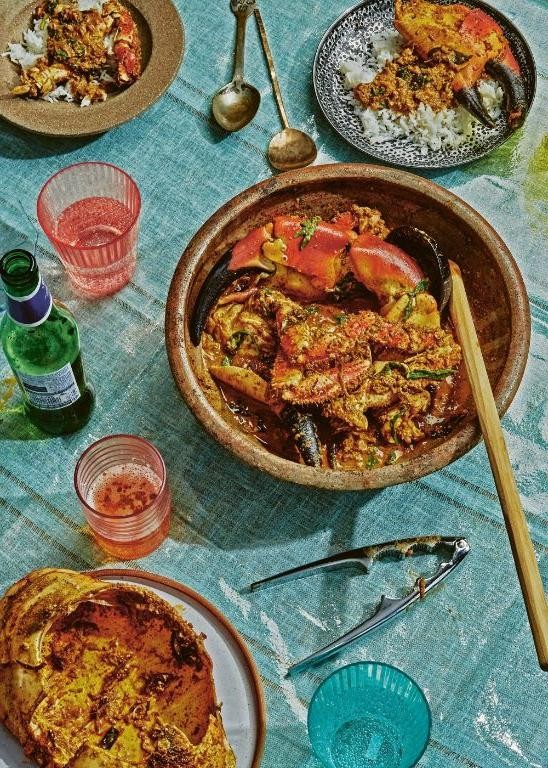
Growing up in a coastal town, I’ve always had a soft spot for seafood, but nothing quite compares to the bold flavors of Jaffna Crab Curry. It’s a dish that takes me back to summer evenings by the beach, where the aroma of spices would fill the air. Today, I’m sharing my take on this classic, with a few personal tweaks that make it even more special.
Ingredients
- Crab – 2 lbs
- Coconut milk – 1 cup
- Curry powder – 2 tbsp
- Garlic – 3 cloves, minced
- Ginger – 1 inch, grated
- Turmeric – 1 tsp
- Salt – 1 tsp
- Oil – 2 tbsp
Instructions
- Clean the crab thoroughly under running water, ensuring all dirt is removed.
- Heat oil in a large pan over medium heat (350°F) and sauté garlic and ginger until fragrant, about 2 minutes.
- Add curry powder and turmeric to the pan, stirring continuously for 1 minute to toast the spices.
- Pour in coconut milk, stirring to combine with the spices, and bring to a gentle simmer.
- Add the crab to the pan, coating it well with the sauce, then cover and cook for 15 minutes.
- Season with salt, stir gently, and cook uncovered for another 5 minutes to thicken the sauce slightly.
- Remove from heat and let it sit for 5 minutes before serving to allow the flavors to meld.
Every bite of this Jaffna Crab Curry is a burst of rich, creamy coconut and warm spices, with the crab meat being tender and succulent. Serve it over steamed rice or with a side of roti for a truly comforting meal that’s sure to impress.
Prawn Curry with Roasted Spices
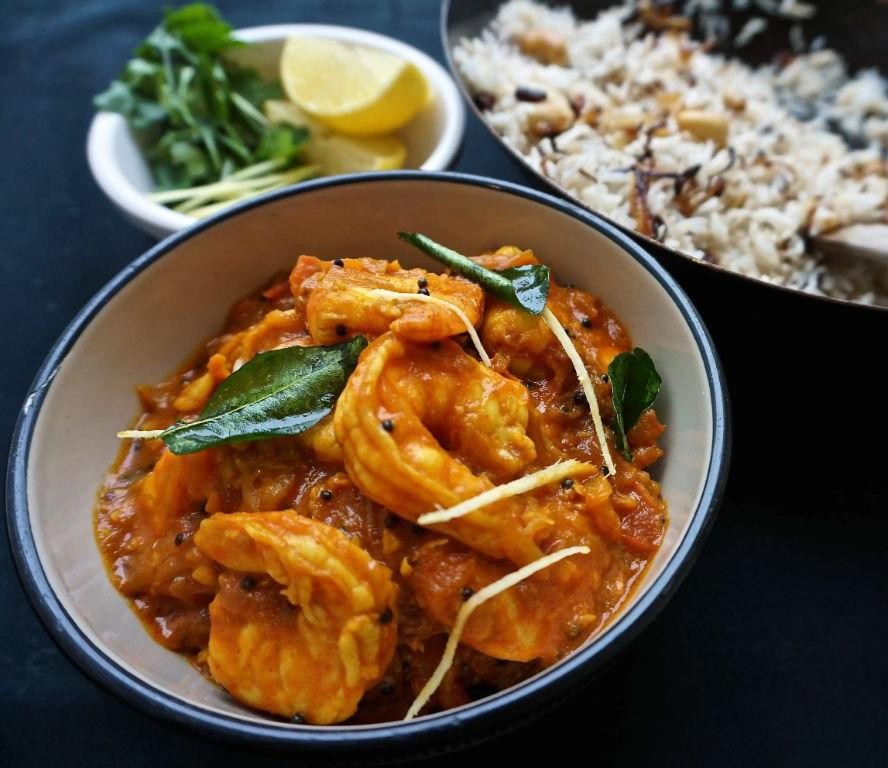
Every time I make this Prawn Curry with Roasted Spices, it takes me back to my first trip to the coastal regions where the aroma of fresh seafood and spices filled the air. It’s a dish that’s both comforting and exotic, perfect for those evenings when you crave something out of the ordinary but don’t want to spend hours in the kitchen.
Ingredients
- Prawns – 1 lb
- Coconut milk – 1 cup
- Tomato paste – 2 tbsp
- Garlic – 3 cloves, minced
- Ginger – 1 tbsp, grated
- Cumin seeds – 1 tsp
- Coriander powder – 1 tsp
- Turmeric powder – ½ tsp
- Red chili powder – ½ tsp
- Salt – ½ tsp
- Vegetable oil – 2 tbsp
Instructions
- Heat vegetable oil in a pan over medium heat (350°F) and add cumin seeds. Wait until they start to sizzle, about 30 seconds.
- Add minced garlic and grated ginger to the pan. Sauté for 1 minute until fragrant. Tip: Keep the heat medium to avoid burning the garlic.
- Stir in tomato paste, coriander powder, turmeric powder, red chili powder, and salt. Cook for 2 minutes, stirring constantly to prevent sticking.
- Pour in coconut milk and bring the mixture to a gentle simmer. Let it cook for 5 minutes to thicken slightly. Tip: Stir occasionally to ensure the spices are well incorporated.
- Add the prawns to the curry, ensuring they are submerged in the sauce. Cook for 4 minutes, or until the prawns turn pink and opaque. Tip: Do not overcook the prawns to keep them tender.
- Remove from heat and let the curry sit for 2 minutes before serving to allow the flavors to meld.
This prawn curry is a beautiful balance of creamy and spicy, with the roasted spices adding a depth of flavor that’s hard to resist. Serve it over a bed of steamed rice or with warm naan bread to soak up every bit of the delicious sauce.
Beef Smore
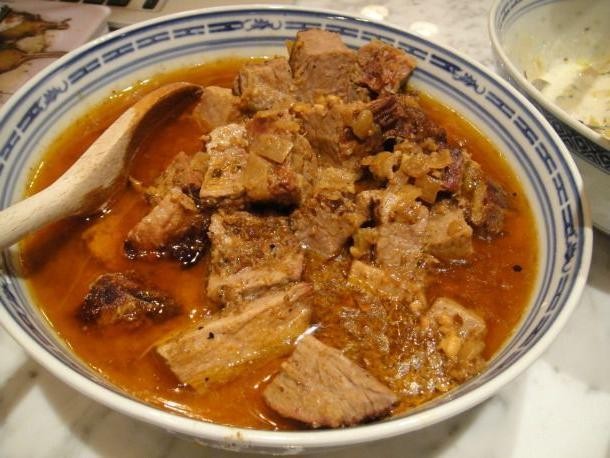
Last weekend, I stumbled upon a twist to the classic campfire treat that’s too good not to share. Imagine the savory depth of beef mingling with the sweet, gooey goodness of marshmallows and chocolate—yes, it’s a Beef Smore, and it’s as intriguing as it sounds.
Ingredients
- Ground beef – 1 lb
- Chocolate bars – 2, broken into pieces
- Marshmallows – 1 cup
- Graham crackers – 8 squares
Instructions
- Preheat your oven to 350°F to get it ready for the final step.
- Cook the ground beef in a skillet over medium heat until it’s fully browned, about 8-10 minutes, stirring occasionally to ensure even cooking. Tip: Drain excess fat for a cleaner flavor.
- Layer half of the graham crackers squares on a baking sheet, then evenly distribute the cooked beef over them.
- Place marshmallows and chocolate pieces on top of the beef layer, covering it as evenly as possible.
- Top with the remaining graham cracker squares, pressing down gently to form sandwiches.
- Bake in the preheated oven for 5 minutes, or until the marshmallows are puffed and golden. Tip: Watch closely to prevent burning.
- Remove from the oven and let cool for 2 minutes before serving. Tip: The filling will be extremely hot, so caution is advised.
Finally, the Beef Smore offers a delightful contrast between the savory beef and the sweet toppings, with a texture that’s both crunchy and melt-in-your-mouth. Serve it with a cold glass of milk to balance the richness, or get adventurous by adding a sprinkle of sea salt on top for an extra flavor dimension.
Cashew Curry
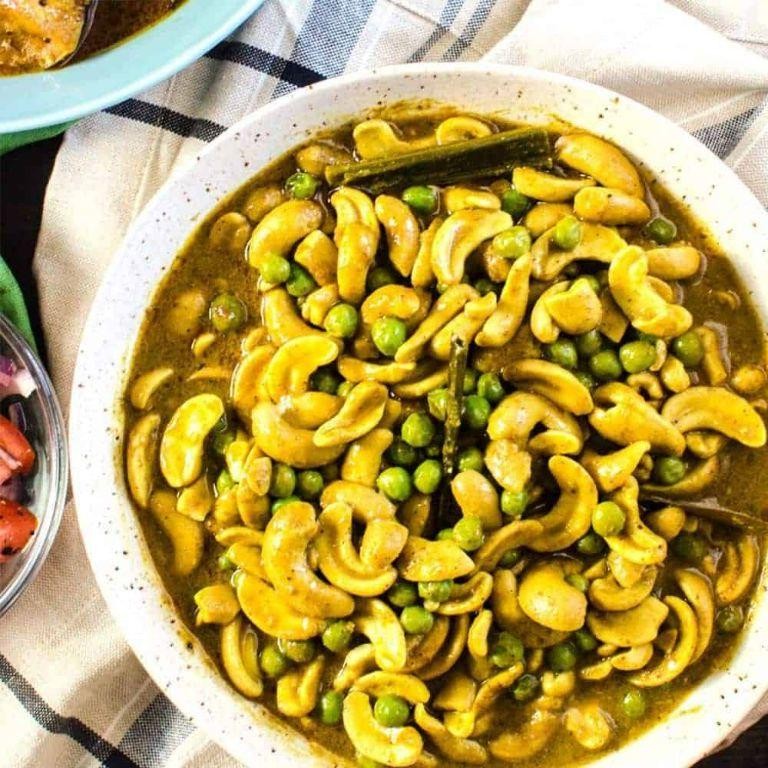
Sometimes, all I crave is a bowl of something creamy, spicy, and utterly comforting, and that’s exactly what this Cashew Curry delivers. It’s my go-to dish when I need a quick yet satisfying meal that feels like a hug in a bowl.
Ingredients
- Cashews – 1 cup
- Coconut milk – 1 can
- Curry powder – 2 tbsp
- Vegetable oil – 1 tbsp
- Salt – 1 tsp
Instructions
- Soak 1 cup of cashews in warm water for 15 minutes to soften them, making blending smoother.
- Drain the cashews and blend them with 1 can of coconut milk until the mixture is completely smooth.
- Heat 1 tbsp of vegetable oil in a large pan over medium heat, then add 2 tbsp of curry powder, stirring for 30 seconds to release the aromas.
- Pour the blended cashew and coconut mixture into the pan, stirring well to combine with the curry powder.
- Add 1 tsp of salt to the curry, then let it simmer on low heat for 10 minutes, stirring occasionally to prevent sticking.
- Once the curry has thickened to your desired consistency, remove it from the heat.
Out of all the dishes I make, this Cashew Curry stands out for its velvety texture and rich, nutty flavor. Serve it over steamed rice or with a side of naan for a meal that’s both hearty and delicious.
Pumpkin Curry
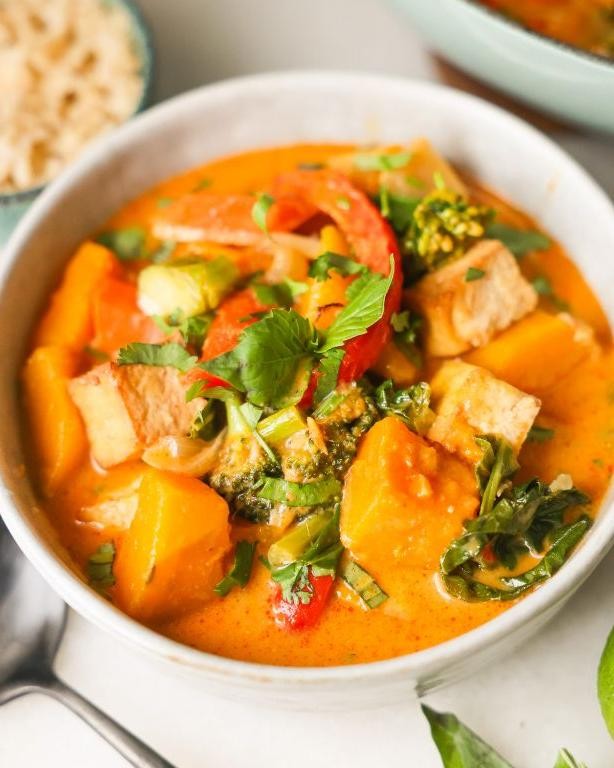
Warmth is what I seek when the air gets crisp, and nothing delivers quite like a hearty pumpkin curry. It’s my go-to dish when I need a little comfort, and I love how the spices meld together to create something truly magical. Here’s how I make it, with a few tricks I’ve picked up along the way.
Ingredients
- Pumpkin – 2 cups, cubed
- Coconut milk – 1 can
- Curry powder – 2 tbsp
- Vegetable oil – 1 tbsp
- Onion – 1, diced
- Garlic – 2 cloves, minced
- Salt – ½ tsp
Instructions
- Heat the vegetable oil in a large pot over medium heat until it shimmers, about 1 minute.
- Add the diced onion and minced garlic, sautéing until the onion is translucent, about 5 minutes. Tip: Stir frequently to prevent burning.
- Stir in the curry powder and cook for another minute to toast the spices, releasing their flavors.
- Add the cubed pumpkin to the pot, stirring to coat it evenly with the spice mixture.
- Pour in the coconut milk and add the salt, stirring to combine. Bring the mixture to a simmer.
- Reduce the heat to low, cover the pot, and let it cook for 20 minutes, or until the pumpkin is tender. Tip: Check halfway through to stir and ensure even cooking.
- Once the pumpkin is soft, use the back of a spoon to mash some of the pieces against the side of the pot, thickening the curry. Tip: Leave some chunks for texture.
- Serve hot, garnished with fresh cilantro if desired.
Zesty and rich, this pumpkin curry is a delightful blend of sweet and savory, with a creamy texture that’s utterly comforting. Try serving it over a bed of fluffy rice or with a side of warm naan for dipping.
Brinjal Moju
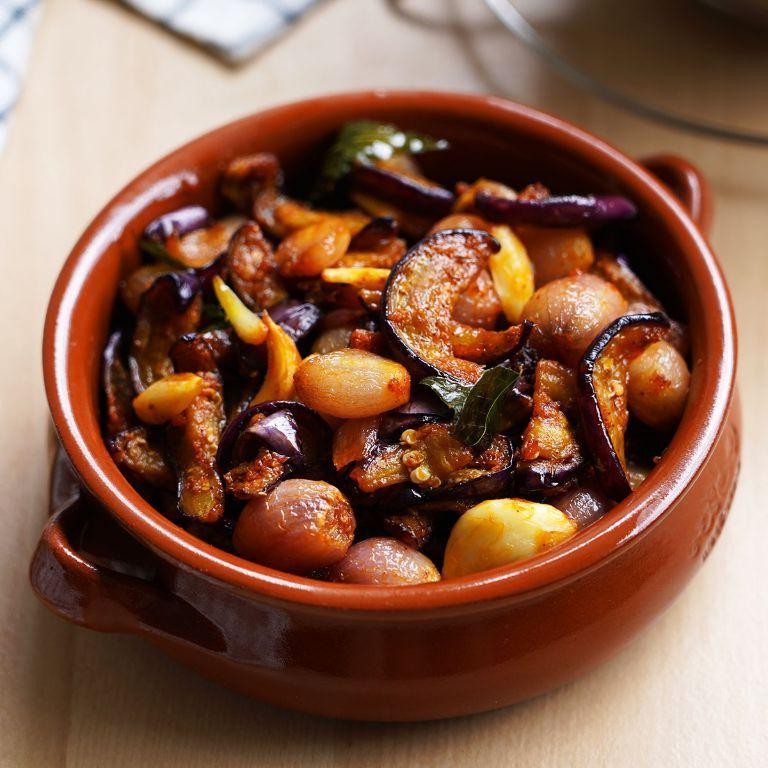
Venturing into the world of pickled delights, I stumbled upon Brinjal Moju, a Sri Lankan treasure that’s become a staple in my kitchen. Its tangy, spicy kick is the perfect companion to any meal, and today, I’m sharing my foolproof recipe that even beginners can master.
Ingredients
- Eggplants – 2 large, cut into strips
- Vinegar – 1 cup
- Sugar – ½ cup
- Mustard seeds – 1 tsp
- Red chili flakes – 1 tbsp
- Turmeric powder – ½ tsp
- Salt – 1 tsp
Instructions
- Heat a pan over medium heat and dry roast the mustard seeds until they start to pop, about 1 minute. Tip: Keep the lid slightly ajar to avoid seeds flying everywhere.
- Add the eggplant strips to the pan, along with vinegar, sugar, red chili flakes, turmeric powder, and salt. Stir well to combine.
- Cook the mixture on low heat for 20 minutes, stirring occasionally, until the eggplants are tender and the liquid has thickened. Tip: The eggplants should be soft but not mushy.
- Once done, remove from heat and let it cool to room temperature before transferring to a jar. Tip: For best flavor, let it sit overnight before serving.
Mouthwatering and versatile, this Brinjal Moju boasts a perfect balance of sweet, sour, and spicy. Serve it alongside rice and curry, or get creative by topping your favorite burger for an unexpected twist.
Ulundu Vadai (Urad Dal Fritters)
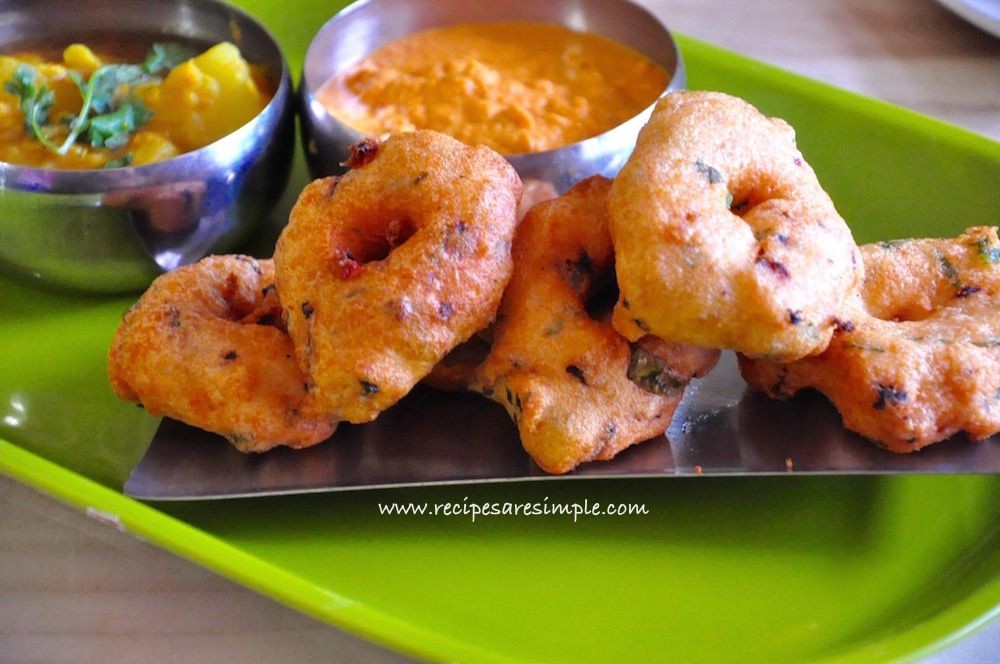
How many times have I found myself craving something crispy, savory, and utterly satisfying with my evening tea? Too many to count, which is why Ulundu Vadai has become a staple in my kitchen. These urad dal fritters are not just a treat; they’re a little piece of my childhood, reminding me of rainy days and my grandma’s cooking.
Ingredients
- Urad dal – 1 cup
- Water – as needed for soaking
- Salt – 1 tsp
- Oil – for deep frying
Instructions
- Soak the urad dal in enough water to cover it completely for at least 4 hours, or overnight for best results. Tip: Soaking longer makes the dal easier to grind and results in fluffier vadai.
- Drain the water completely and grind the dal to a smooth, thick batter without adding any water. Tip: A food processor works best here, but a traditional stone grinder can add an extra smoothness to the batter.
- Add salt to the batter and mix well. The consistency should be thick enough to hold its shape when formed into a ball.
- Heat oil in a deep fryer or a heavy-bottomed pan to 350°F. Tip: To test if the oil is ready, drop a small amount of batter into the oil; if it rises immediately, the oil is at the right temperature.
- Wet your hands, take a small portion of the batter, flatten it slightly, and make a hole in the center with your finger.
- Carefully slide the shaped batter into the hot oil and fry in batches until golden brown and crispy, about 3-4 minutes per side.
- Remove the vadai with a slotted spoon and drain on paper towels to remove excess oil.
Rich in flavor and with a delightfully crispy exterior giving way to a soft, fluffy interior, these vadai are perfect as is or paired with a tangy coconut chutney. Sometimes, I like to serve them atop a bed of fresh greens for a contrasting texture that elevates the whole experience.
Conclusion
We hope this roundup of 18 Spicy Sri Lankan Recipes has inspired you to bring some bold flavors into your kitchen! Each dish offers a unique taste of Sri Lanka’s rich culinary heritage. Don’t forget to try these recipes, share your favorites in the comments, and pin this article to your Pinterest board for your next culinary adventure. Happy cooking!


